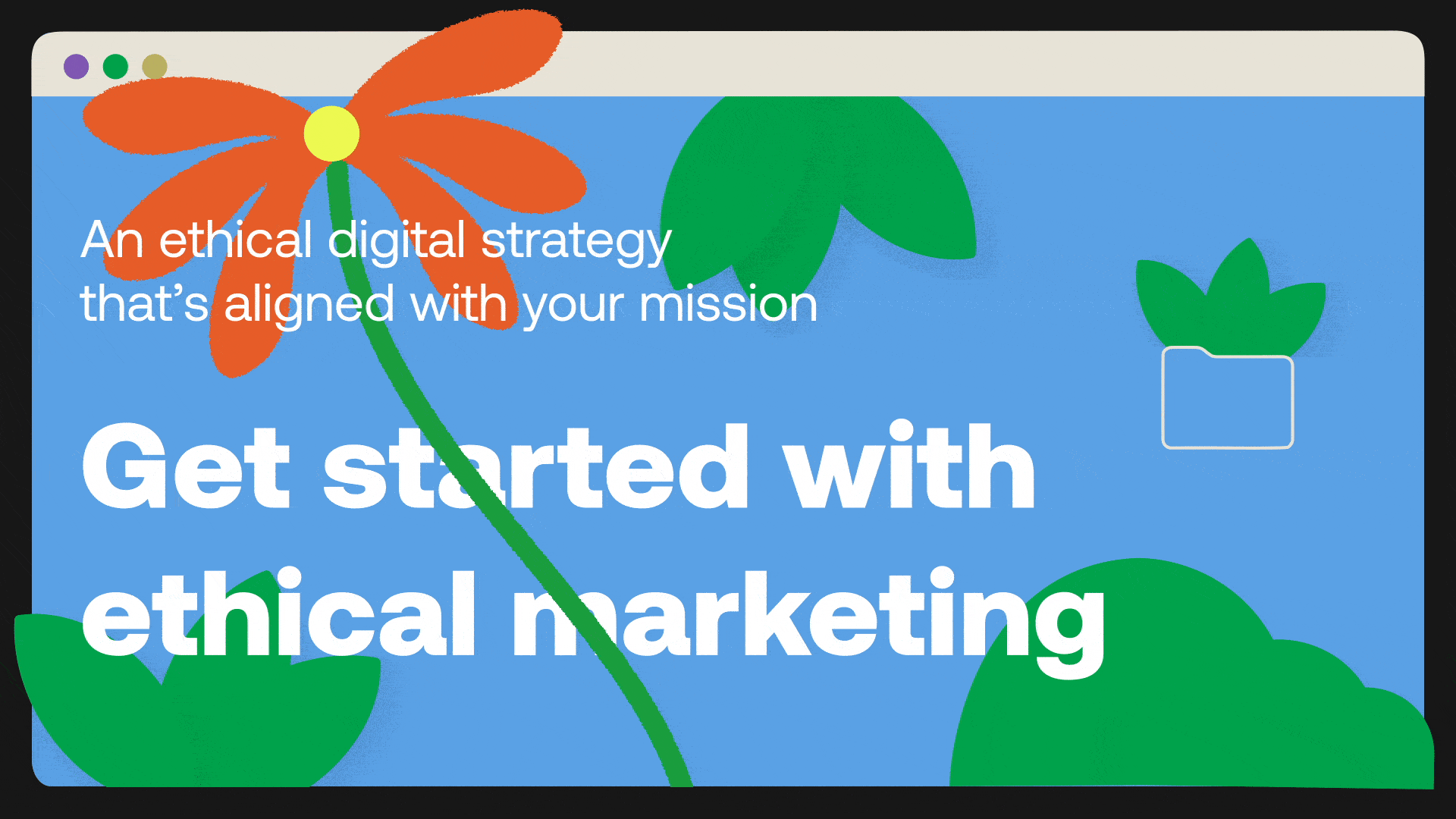
Planet
Anything you’ve ever (digitally) sent into the world has an ecological footprint: your social media channels, your website, your campaigns and your advertisements. Did you know you can decrease the size of that footprint with energy efficient design and green hosting (amongst others)? Here’s how you can calculate that footprint, and how to reduce it:

-
Green hosting
If the internet was a country, it would be the sixth most polluting country in the world. Let that sink in. Time to switch to green hosting.
- Fast, secure, and ecofriendly: Green Geeks.
- Or check out Hostpapa, and their blog about green hosting.
-
Advertisement pollution
While we’re at it: does the pollution of your advertisement (for society) beat the results you get (as a company)? Honesty is the best policy!
- Calculate the footprint of your ads quickly here
-
Sustainable digital design
Another tip to decrease that footprint is using sustainable design. Take a look at these guides for some great insights:
- Stay up to date on everything new surrounding sustainable design.
- Curious about your website’s current carbon footprint? Take a look here. For a more detailed anaylsis you can go here.
- Ouch, the average digital designer produces the equivalent of one flight each year. Here are some tips to reduce it.
People
Think about the last campaign or website you’ve made. What kind of people were shown? Was that campaign / website easy to understand or to use for people with a disability? How inclusive was the team that worked on it? Do you create target audiences? Why? Are the claims you’re making correct, or are they based on a (favorable) future scenario? Every choice you make has an impact on the people who are allowed into the universe of your brand – and who aren’t.

-
Working with influencers
Do you work with influencers? Read up on the shared responsibility you have with that influencer. This is an Influencer Code of Conduct that might help. Check in with your local digital authority to see the standards in your own country.
-
Transparency and honest claims
Green / social / pink / ethical washing: just. don’t. A half truth is a whole lie. So don’t make any claims you can’t fulfill. And even if you do, more and more government regulated organizations will come and stop you.
-
Accessible and inclusive design
- A fully WCAG (Web Content Accessibility Guidelines) compliant website isn’t necessarily a user-friendly website. Especially when taking people with a neurodiverse brain into account. This UX-guide does.
- In case you’re not familiar with the WCAG: it’s the most used checklist you can use to make websites more accessible. To help you actually use it, you could check out this tool.
-
Ad-free = mental fresh air
And as a bonus – not digital, but just as important: the tension between societal benefits and company profit. Cities that don’t approve out-of-home commercials have a much higher rating in happiness. Like Grenoble, for example.
Privacy
So you’ve come a long way! Let’s not ruin it by putting labels on people during data collection. Good news: you don’t have to anymore!

-
GDPR proof tool
Still using Mailchimp and Google Analytics? There are many ethical alternatives. Take a look:
- Email
- An ethical, privacy-proof and easy to use newsletter service. Too good to be true? Check out EmailOctopus.
- Your best ethical choice: open source. Perhaps not as easy to use, but less chance of ethical mistakes. Take a look at this service, to learn more.
- Or check out this 100% GDPR proof e-mail service.
- Oh, and did you know you could literally clean up your inbox? Every email you save and send costs energy. So that standardized signature at the bottom of your email? Get ready to change it to think before you send.
- Email
-
Targeting without tracking
Great move: changing from personalization to relevance. How? With contextual advertising. Makes cookies obsolete!
-
Social media alternatives
Brands that quit Meta (like Patagonia and Lush) come from a position of privilege: the level of trust built with their users is so strong, they don’t solely rely on social media anymore. Not in the position to quit social media yourself? There are alternatives. Great branding is more likely to reach its audience – even without an advertising budget:
- Perhaps you’ve already seen the rise of Mastodon after Twitter’s new CEO. It’s a great, ethical alternative!
- Not just for gamers, but a trustworthy online alternative to connect with your target audience: Discord.
- An ode to Marie Kondo: Mohi. This clutter free app is completely based on great word of mouth. So to speak.
-
Manipulative design
Do you give users an honest choice, or do you set them up for opt-ins they weren’t asking for in the first place? If you create a good product brand, you don’t need any manipulative design.